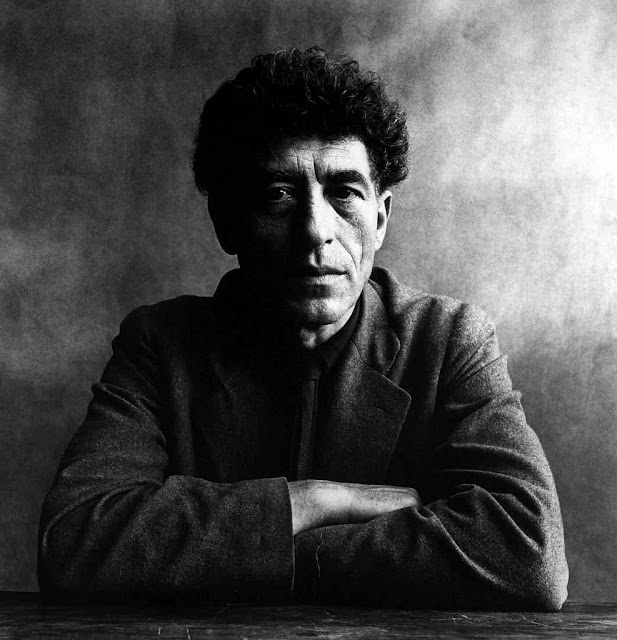Best known for his fashion photography, Penn's repertoire also includes portraits of creative greats; ethnographic photographs from around the world; Modernist still lifes of food, bones, bottles, metal, and found objects; and photographic travel essays.
Irving Penn was among the first photographers to pose subjects against a simple grey or white backdrop and he effectively used this simplicity. Expanding his austere studio surroundings, Penn constructed a set of upright angled backdrops, to form a stark, acute corner.
Penn captured the faces, and personalities, of celebrities from movie star Spencer Tracy to author Anaïs Nin, gradually changing his approach to portraiture over the years. In the 1940s, Penn positioned his sitters in a narrow corner created by two bare, dull theater flats, a device of his own creation. The set both physically and psychologically confined the sitters, putting them on equal footing with Penn.
Penn developed a more direct approach by the late 1950s, photographing subjects such as Picasso (1957) and Louis Jouvet (1951) at close-range. A dramatic change in lighting can be seen in his portraits of the 1980s, which include a striking image of the artist William de Kooning (1983). Penn's manipulation of formal design elements such as light and shadow, and his ability to capture a significant gesture, expression, or mood, ultimately reveal something intriguing about his subjects.
Irving Penn was among the first photographers to pose subjects against a simple grey or white backdrop and he effectively used this simplicity. Expanding his austere studio surroundings, Penn constructed a set of upright angled backdrops, to form a stark, acute corner.
Penn captured the faces, and personalities, of celebrities from movie star Spencer Tracy to author Anaïs Nin, gradually changing his approach to portraiture over the years. In the 1940s, Penn positioned his sitters in a narrow corner created by two bare, dull theater flats, a device of his own creation. The set both physically and psychologically confined the sitters, putting them on equal footing with Penn.
Penn developed a more direct approach by the late 1950s, photographing subjects such as Picasso (1957) and Louis Jouvet (1951) at close-range. A dramatic change in lighting can be seen in his portraits of the 1980s, which include a striking image of the artist William de Kooning (1983). Penn's manipulation of formal design elements such as light and shadow, and his ability to capture a significant gesture, expression, or mood, ultimately reveal something intriguing about his subjects.
 |
| Isabella Rossellini |
 |
| Ingmar Bergman |
 |
| Rudolf Nureyev |
 |
| John Updike |
 |
| Yves Saint Laurent |
 |
| Truman Capote |
 |
| Francis Bacon |
 |
| Jasper Johns |
 |
| Alberto Giacometti |
 |
| Audrey Hepburn |
 |
| Ingmar Bergman |
 |
| Richard Burton |
 |
| Miles Davis |
 |
| Joan Didion |
 |
| Philip Seymour Hoffman |
 |
| Jean Cocteau |
 |
| Marc Jacobs |
 |
| Leontyne Price |
 |
| Martin Scorsese |
 |
| Dora Maar |
 |
| Tom Stoppard |
 |
| Louis Jouvet |
 |
| Helmut Newton |
 |
| Al Pacino |
 |
| Pablo Picasso |
 |
| Louise Bourgeois |
 |
| Carson McCullers |
 |
| Nicole Kidman |
 |
| Robin Williams |
 |
| Isamu Noguchi |








0 comments:
Post a Comment